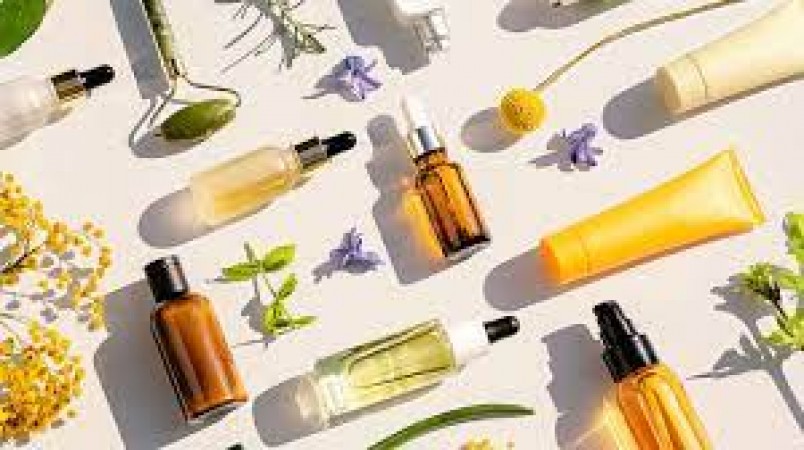
In today's beauty-conscious world, where self-care and grooming have taken center stage, it's crucial to be well-informed about the products we apply to our skin. The quest for flawless skin and luscious hair often leads us to explore a wide array of beauty products. However, a closer look at the ingredient list might reveal some unsettling truths. Many beauty products harbor potentially harmful chemicals that can have adverse effects on our skin, health, and the environment. Before you slather on that lotion or apply that new hair serum, it's time to dive into the hidden dangers lurking within your beauty products. The world of beauty products often seems like a magical realm, promising transformation and enhancement. However, beneath the alluring packaging and enticing promises, lies a complex concoction of chemicals that may not be as beneficial as they appear.
From moisturizers to shampoos, beauty products have become an integral part of our daily routines. The desire to achieve the perfect look has driven the beauty industry to develop an astonishing variety of products. But are these products as safe as they claim to be?
The key to uncovering potential hazards in beauty products is right there on the label – the ingredient list. However, deciphering those long, scientific-sounding names can be daunting. Familiarizing yourself with common harmful chemicals is the first step toward informed decision-making.
Parabens, often used as preservatives, can mimic estrogen in the body. This hormonal disruption has raised concerns about parabens' links to breast cancer and reproductive issues. Opting for paraben-free products might be a safer choice.
Sulfates are responsible for that satisfying lather in shampoos and cleansers. However, they can strip the skin and hair of natural oils, leading to dryness and irritation. Sulfate-free options are worth considering, especially for those with sensitive skin.
Formaldehyde, a preservative found in certain beauty treatments, is a known carcinogen. Prolonged exposure can have serious health implications, including respiratory issues and skin allergies. Recognizing formaldehyde-releasing compounds in ingredient lists is crucial.
Chemicals like artificial fragrances and dyes can lead to skin sensitization and irritation. What might seem like a minor inconvenience could develop into a persistent skin condition. Opting for fragrance-free and hypoallergenic products might prevent such reactions.
The cumulative effect of long-term chemical exposure is concerning. Premature aging, uneven skin tone, and loss of skin elasticity could be attributed to prolonged use of products containing harmful chemicals. Prioritizing clean beauty might contribute to healthier skin in the long run.
The skin, our largest organ, is permeable. Chemicals applied to the skin can be absorbed into the bloodstream, potentially causing systemic effects. This connection between the skin and overall health emphasizes the need for cautious product selection.
Emerging research suggests that some chemicals in beauty products could be linked to serious health issues like hormone disruption, fertility problems, and even certain cancers. While conclusive evidence is still lacking, the precautionary principle encourages minimizing exposure to questionable ingredients.
The beauty industry's impact isn't just skin deep; it extends to the environment. Unsustainable practices, excessive packaging, and chemical-laden products contribute to pollution and ecological damage. Supporting eco-friendly and cruelty-free brands can make a difference.
Microplastics, often found in exfoliating products, and chemical runoff from personal care items find their way into water bodies, posing a threat to aquatic life. By choosing products with biodegradable exfoliants and environmentally conscious packaging, you can play a part in reducing this pollution.
Navigating ingredient lists can be overwhelming, but education is empowering. Familiarize yourself with harmful chemicals, and opt for products with transparent labeling practices. Apps and online resources can assist you in making informed choices while shopping.
Natural and organic beauty products aim to minimize the use of synthetic chemicals. However, it's essential to be vigilant, as the terms "natural" and "organic" aren't regulated universally. Look for credible certifications to ensure you're truly getting a safer product.
For those seeking complete control over the ingredients they use, DIY beauty is an exciting option. Common kitchen ingredients like honey, yogurt, and oils can be combined to create effective and safe beauty treatments. However, it's vital to research and follow recipes meticulously.
DIY beauty allows you to personalize your skincare routine, avoid unnecessary chemicals, and embrace a sustainable approach. By concocting your beauty products, you can have peace of mind knowing exactly what you're putting on your skin. In a world where beauty standards are often fueled by media and advertising, it's easy to overlook the potential dangers lurking in our beauty products. Being an informed and conscious consumer is the first step toward healthier skin, a safer environment, and overall well-being. By understanding the risks associated with certain chemicals and making thoughtful choices, you can embark on a journey towards clean, sustainable, and genuinely beneficial beauty practices.
UN requests more funding as nations launch funds to protect the environment
Going to the Bathroom in Zero Gravity: The Intriguing Science of Space Toilets
How Water was Discovered on the Moon: Chandrayaan-1's Decade-Old Revelation